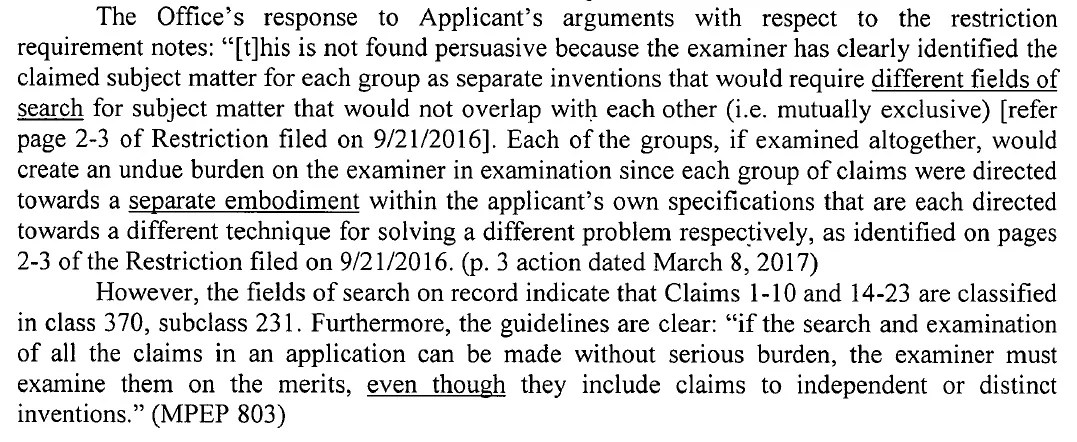As we have discussed in past posts, restriction requirements can be a serious burden, so it pays to know how to address them strategically. When necessary, restrictions can give the applicant some leverage if they know how to use it. Part of knowing how to use it is knowing how to win petitions against improper restrictions.
Today we review a nice example from a Texas Instruments case that illustrates the teeth of the search burden requirement. The case is SN 14/158,569. The application relates to wireless communication, and in particular to user equipment connected to a base station. The invention deals with LTE systems, and in one embodiment uses some interesting techniques to support multiplexing of unicast and multicast data in a cell operating with the evolved transmission format. While we could go on about the details, the focus of this case is on the restriction (as an aside, applicants in the telecom industry seem to attack restrictions to a lesser extent than some other industries, but more on that another time).
The MPEP makes clear that all restrictions require a serious search burden. Often there is not much on the record as to why there is a serious search burden, other than the examiner’s search classification. In the TI case, the examiner restricted the claims into three groups. The examiner alleged a search burden but classified two of the groups into the same class/subclass (class 370, subclass 231), and further referred to the two groups as “Invention I.” When the applicant traversed, the Examiner’s response was that the applicant had admitted in the specification that the groups were “different embodiments” and therefore restriction was proper.
On petition, the Office agreed with the applicant and pointed out that even if the embodiments are independent and distinct, they are not restrictable unless there is a serious search burden.

So, be on the lookout for unsupported search burdens when determining whether it might be possible to overturn a restriction.

Leave a comment